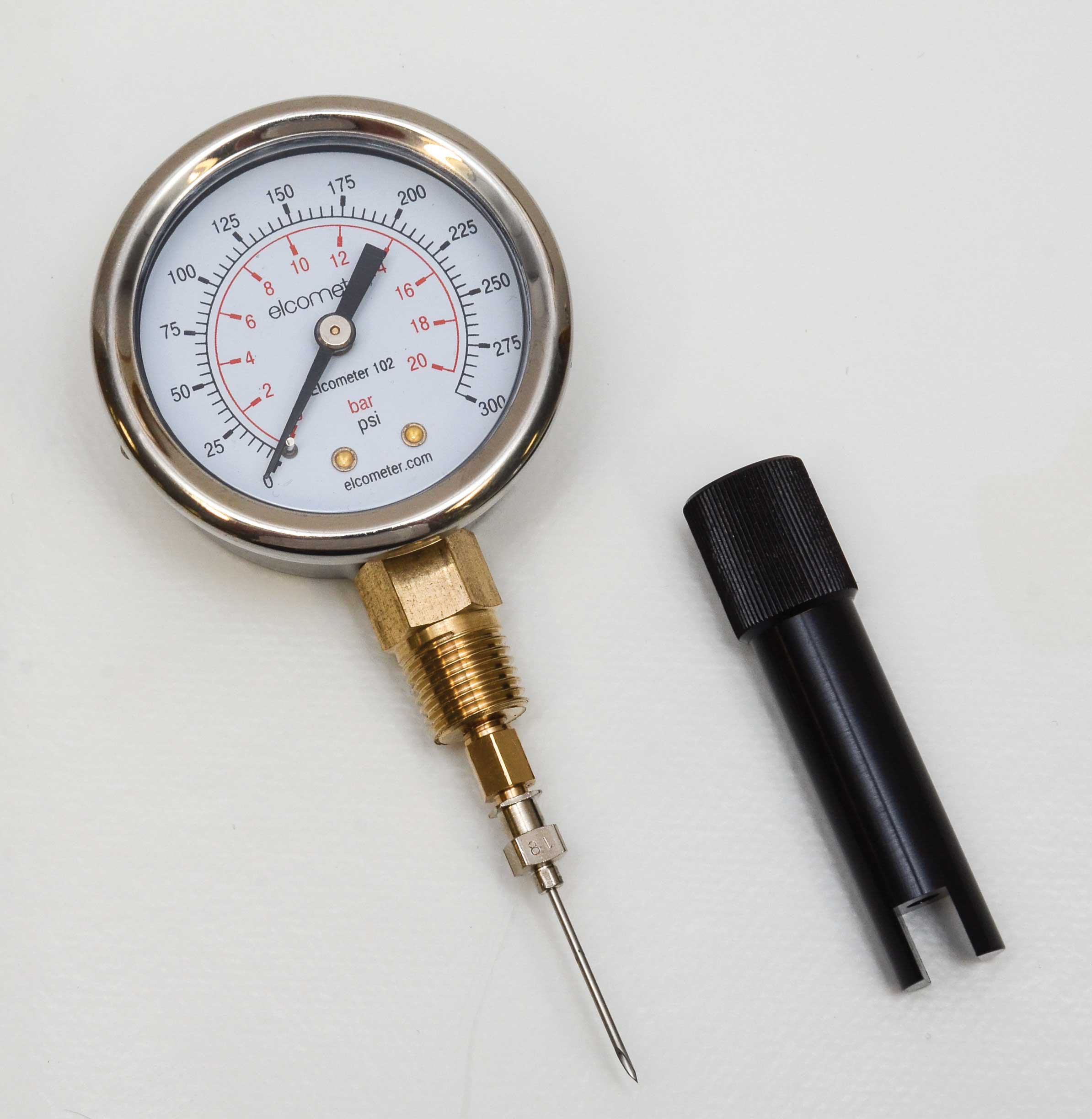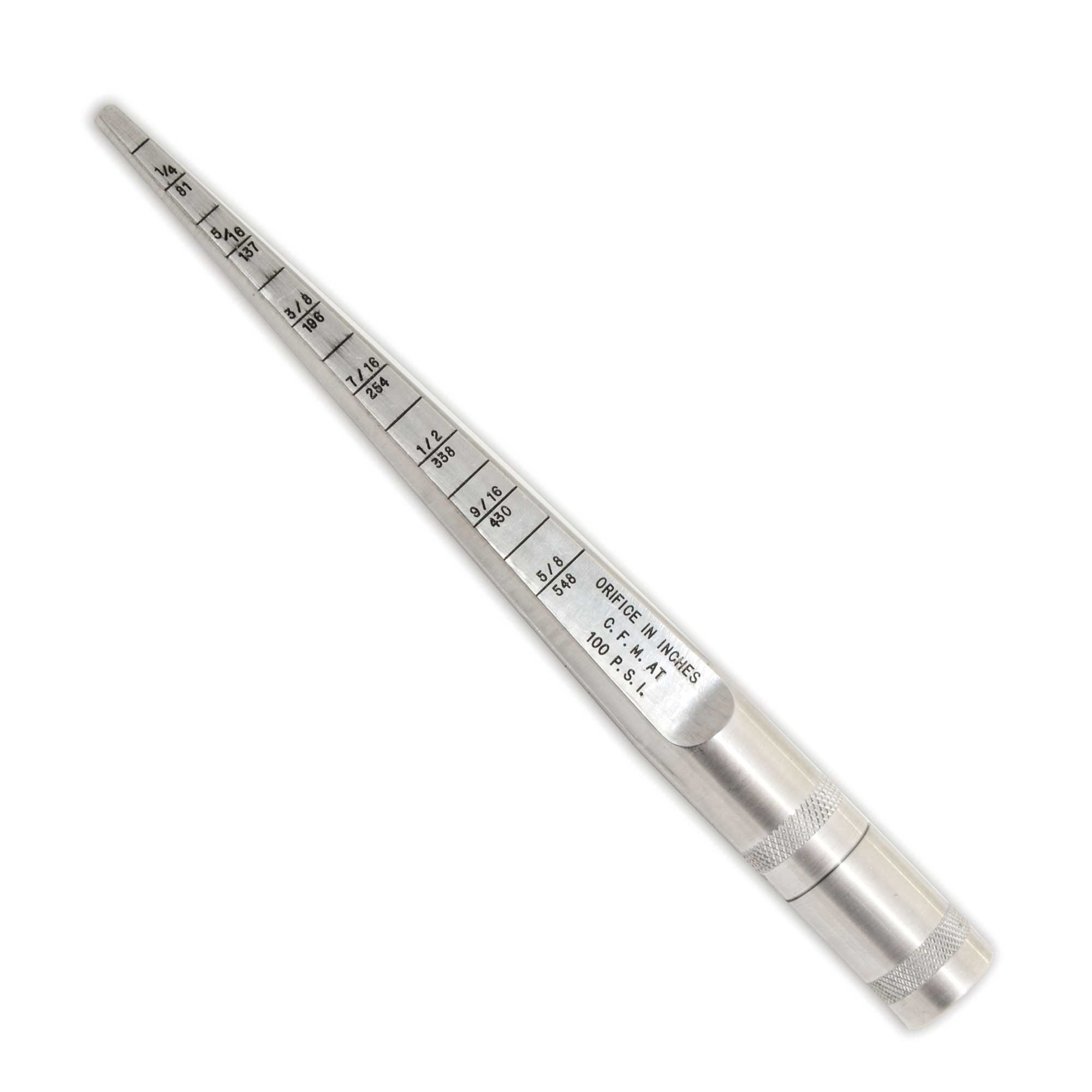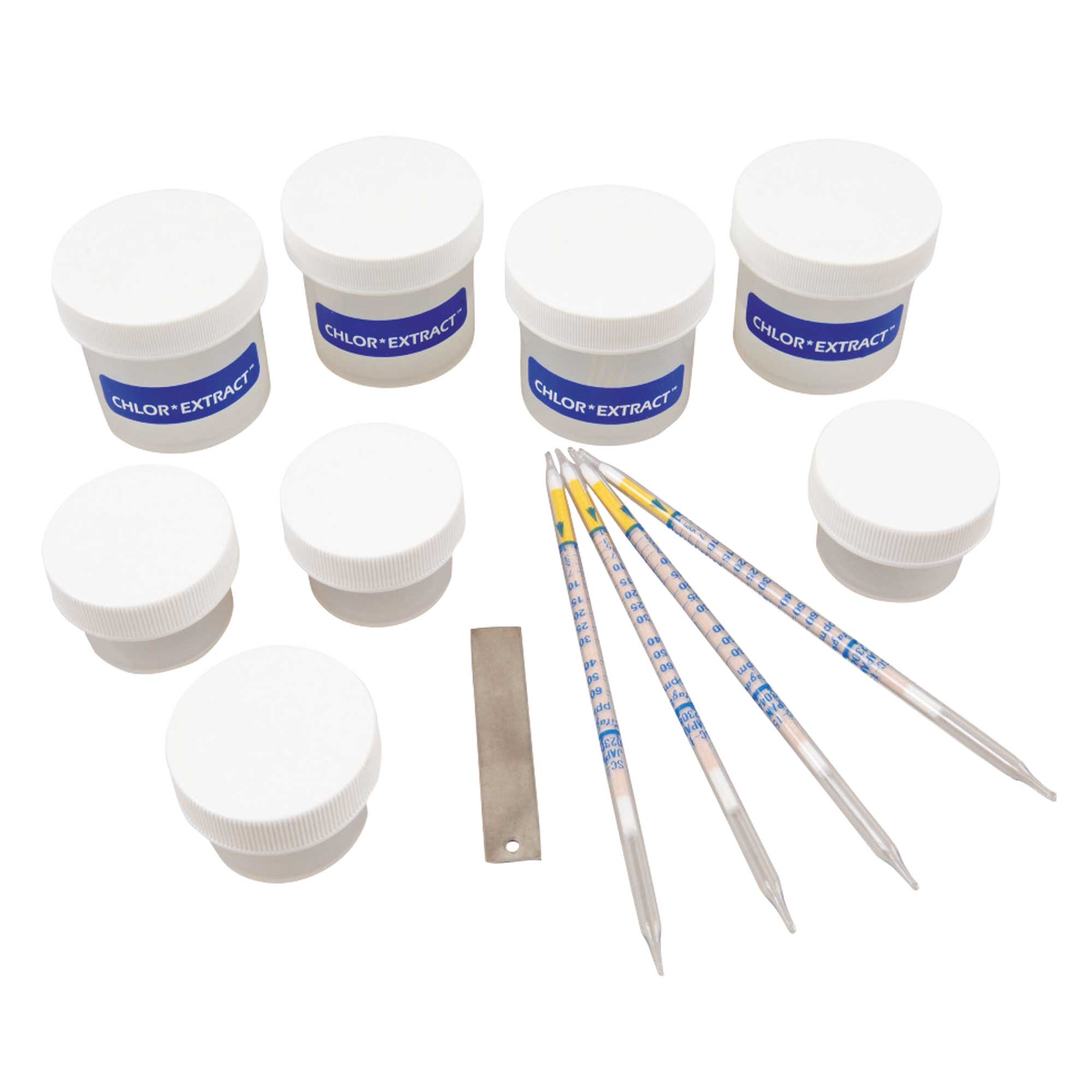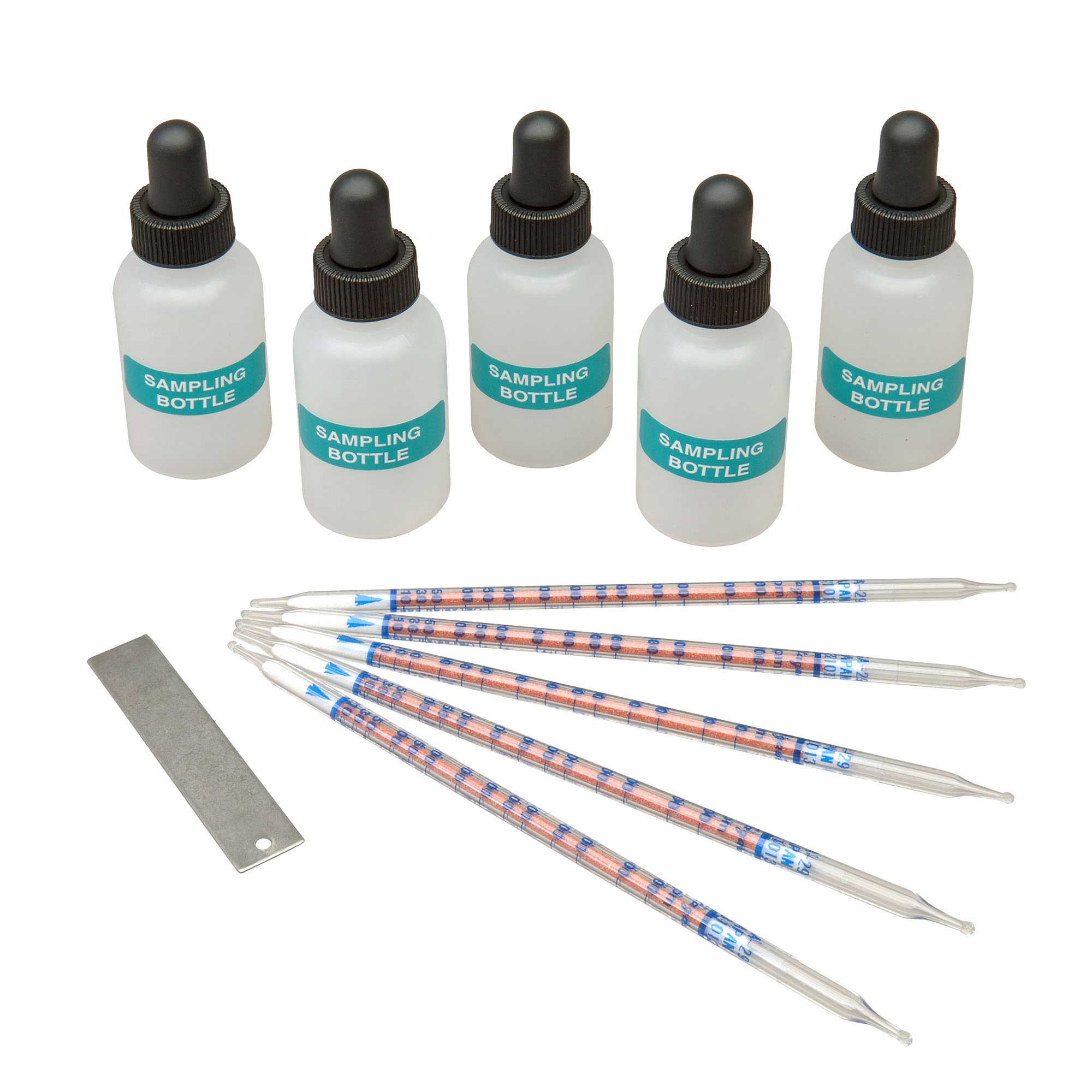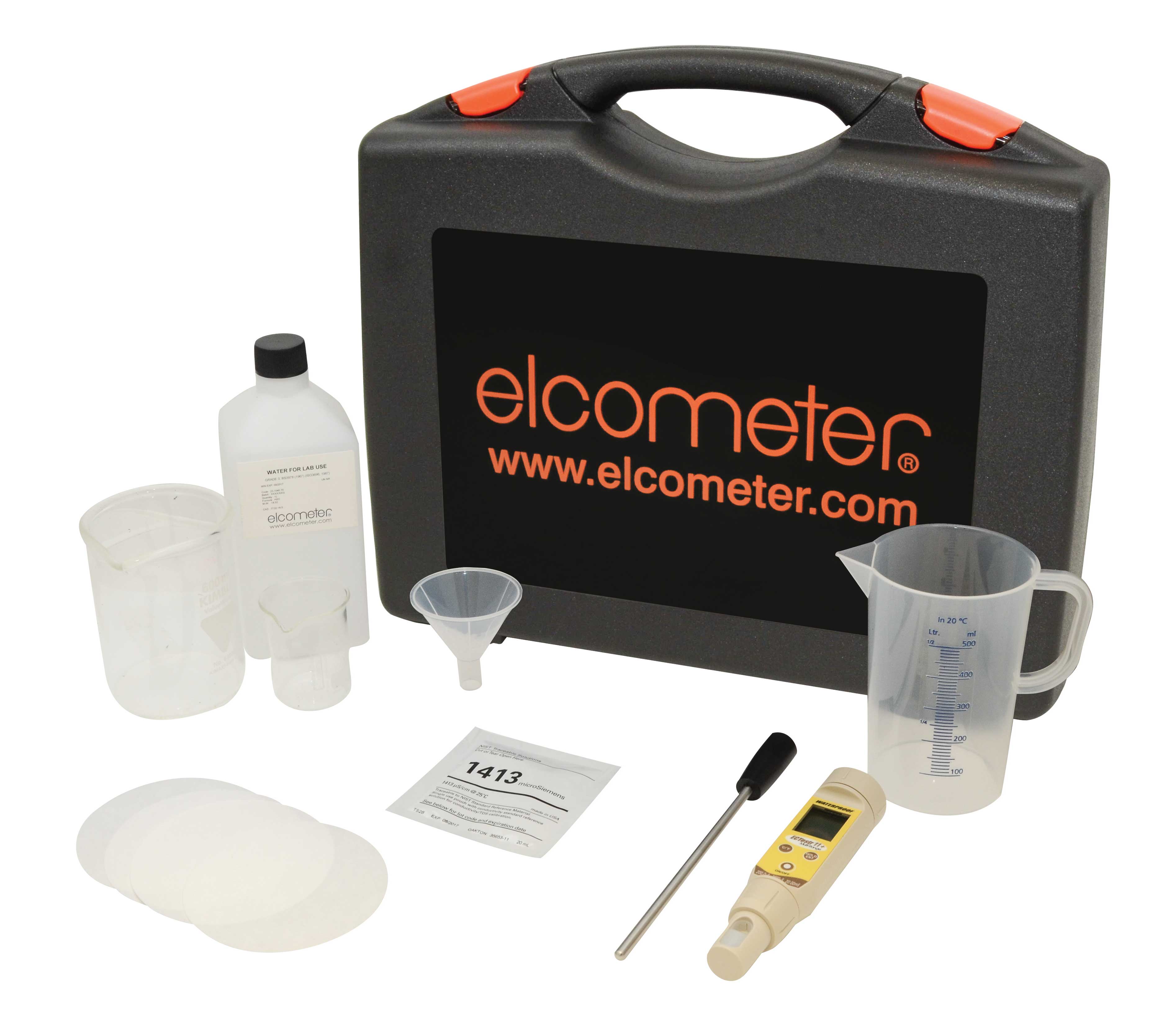
Inspection During the Blasting Process
There are several key. important parameters need to be controlled and monitored during the blasting. These include:
1: Pressure
The nozzle pressure required to effectively blast a surface is mainly governed by the compressor rating (CFM and pressure) and the nozzle orifice size.
The pressure required for blasting is determined by the airflow, measured in litres/sec (cubic feet per minute (CFM) and is typically measured using a needle pressure gauge which is inserted into the blast hose. In theory, this should be done adjacent to the blast nozzle.
2: Nozzle Size (diameter)
Blast nozzles range in internal diameter from about 6mm (¼ inch) to 12.5mm (½ inch). During blasting however, the orifice of the nozzle wears and its diameter then increases.
An increased diameter limits the effectiveness of the blast process, reducing nozzle pressure. Subsequently, a blast nozzle orifice gauge is used in order to determine the blast nozzle diameter, hence the volume of media being used over a time period.
3: Climatic Conditions
If you want to apply a coating follow immediately after blasting, then the climatic conditions should be checked before blasting begins to ensure that they are within specification. If condensation is present on the metal surface after blasting, this may cause oxidation (flash rust).
4: Monitoring Cleanliness of the Water & Blast Media
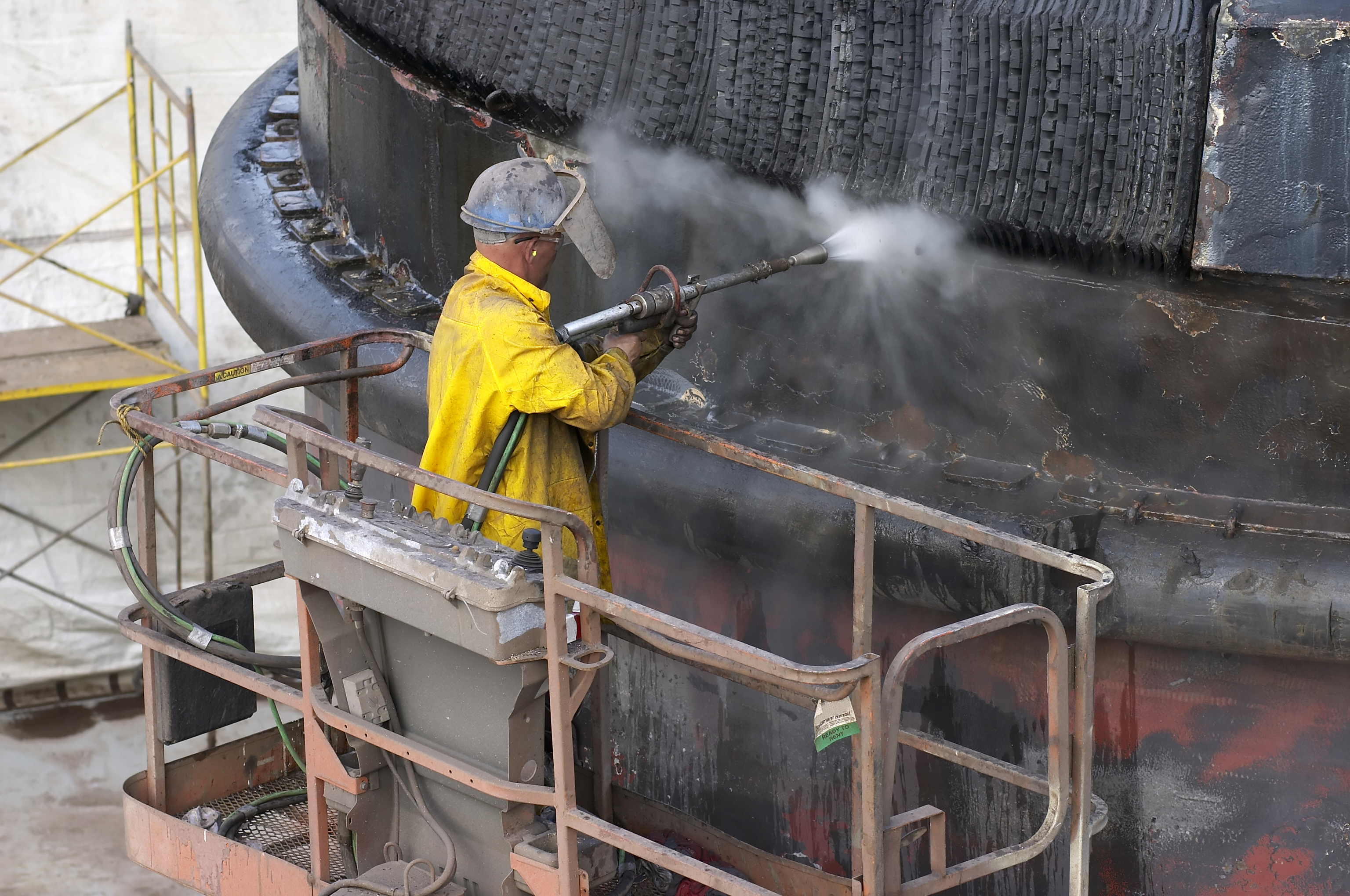
It is common for the abrasive media or water to be recycled. In these instances, it is important that the level of contaminants in the recycled material is carefully monitored to avoid recontamination of the surface being cleaned.
Salts, and in particular chlorides, deposited on a surface by contaminated abrasives during blasting will cause a coating to fail prematurely.
Contamination will increase if the blast media is recycled several times. It is therefore good practice to monitor the cleanliness of the abrasive media and any water used throughout the cleaning process.
Technical data sheets of coatings will specify certain levels of cleanliness to be achieved prior to application. Using a chloride specific ion test in the field will accurately identify contamination and prevent costly surface-related failures.
5: Testing Chloride Concentration in Abrasives
The Elcometer 134A Test Kit comprises of a container which is used to measure a quantity of the blast media, another container that has a pre-measured quantity of solution and a measuring titration tube.
The measured amount of abrasive sample is mixed with the test solution. A titration tube is prepared and placed in the settled solution and the liquid travels to the top of the tube by capillary action. The titration tube contains crystals that will change colour when the solution contains chloride ions.
At the point where the colour changes from pink to white, a value is read from the scale printed on the tube. This gives the concentration of chlorides present in the abrasive in parts per million (ppm).
6: Testing the Chloride Content in Water
If the chloride levels used in the water are too high, it could promote premature corrosion, shortening the life of both steel and concrete structures. The Elcometer 134W is a chloride ion specific test for water and is used to monitor the concentration of chlorides in water.
The Elcometer 134W Test Kit comprises of a sample bottle with a water dropper and a titration tube. A sample of the wash water is collected using the dropper and placed in the bottle. The titration tube is prepared and placed in the liquid and the liquid then travels up the tube, changing the colour of the crystals when chloride ions are present.
Once the liquid reaches the top, the tube is removed and the point where the colour changes from pink to white is read off the scale. The point of the colour change determines the chloride concentration in parts per million (ppm).
ASTM and ISO have standards which provide a further method for measuring the cleanliness of abrasives using a conductivity meter, as used in other cleanliness tests referred to elsewhere in this section. These standards involve soaking a quantity of abrasive in clean water to wash off any salts that may be present and then measuring the resultant “contaminated” water with the conductivity meter to assess the amount of salts present.
The ISO method uses a specific mass of abrasive whereas the ASTM method uses a specific volume of abrasive. This means that the ASTM method, ASTM D 4940 is more practical for field use as the inspector merely needs to half fill a specific container with abrasive, top up the beaker with clean water mix the solution for 1 minute, filter off the water and measure the conductivity.
Kits are available, the Elcometer 138 Abrasive Soluble Salt Test Kit – ASTM D4940 for example, which provide all the equipment required to carry out this straightforward test.
How Elcometer Can Help
We understand just how important it is to ensure your surface is completely free from contaminants before you apply your coating.
If you have any questions about the blasting process and want to make sure you've taken the necessary steps before the application process, you can contact the Elcometer team and we'd be more than happy to help with any queries.

